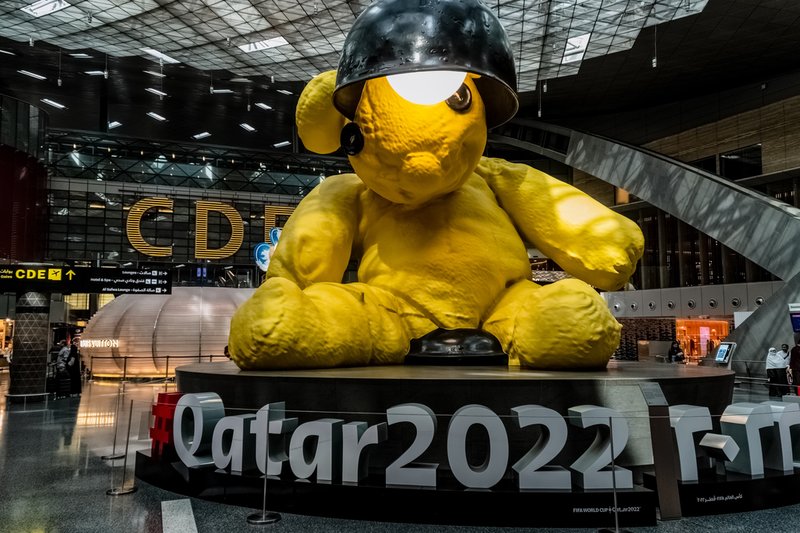Projects
How did Qatari airports prepare for the FIFA World Cup?
The Qatar World Cup is the first winter tournament, and the first in the Middle East. How did the country prepare its aviation infrastructure? Kirstie Pickering investigates.
Image: copyright
Qatar has made history by hosting not only the country’s first FIFA World Cup, but the first to be staged in the Middle East, and in the smallest host nation to do so.
Despite being marred by controversy since the awarded country was named back in 2010, Qatar has delivered on its commitment to build seven new state-of-the-art stadiums to facilitate the tournament, and aviation has had an essential role to play in the event too.
Airport upgrades
With an expected 1.8 million visitors visiting the country over the four-week competition and the vast majority set to arrive by air, it was essential that Hamad International Airport (HIA) undergo expansion.
Inaugurated on 10 November, the airport’s Phase A expansion increases HIA’s capacity to over 58 million passengers per annum. This phase includes the enhancement of HIA’s central concourse built in the North Plaza of the terminal, home to luxury retail brands, concept stores, and restaurants. The concourse is set within a 10,000m2 indoor tropical garden beneath a dramatic grid shell roof structure that lets in natural sunlight.
HIA has also temporarily reopened a refurbished Doha International Airport (DIA) – which ceased operation for commercial flights in 2014 when HIA was opened – to help cater to the massive influx of visitors to the country. Thirteen airlines will operate to and from DIA, in addition to charter flights.
“There is close coordination between Matar – the Qatar Company for Airports Operation and Management, which operates HIA – and the Qatar Civil Aviation Authority ,” says Ahmed Rihan, airlines affairs consultant at Qatar Civil Aviation Authority.
“Extra capacity has been added to the air traffic management system to accommodate around 100 flights per hour, and the number of air routes has been increased to 17. The capability of HIA had also been upgraded to allow three takeoffs and landings at the same time.”

Lamp Bear by Urs Fischer, located in HIA. Credit: Konstantin Zadavin/Shutterstock
Planning operations
Ahead of the FIFA World Cup, MATAR formulated the Airports Operations Plan (AOP). All plans for airport operations during the tournament were tested during the FIFA Arab Cup 2021 – which also took place in Qatar – and were peer-reviewed by aviation authority bodies and organisations who have previously hosted events on a similar scale.
The AOP outlines every process and procedure in place for the smooth delivery of the tournament. For example, the types of passengers expected to enter Qatar through HIA and DIA have been defined and their travel journey mapped out to help visitors have a seamless experience through the airport and into the city.
The roles and responsibilities of all airport stakeholders have also been defined in the AOP, including the organiser’s responsibilities to ensure close teamwork between airport stakeholders and FIFA organisers.
“It means a lot to Qatar to host the FIFA World Cup,” says Rihan. “It is a challenge to organise such a big event for the first time in the Middle East, but it is an opportunity to show the world how Qatar has developed over the past twenty years, share our culture, and invite them to experience Arabian hospitality.”
Getting around Qatar
The AOP also covers coordination with all of Qatar’s transport providers to ensure easy connectivity to and from the airport, city, and stadiums. Coordination between traffic police, security, taxi, and coach operators has also been mapped out.
To enter Qatar and access the stadiums, football fans must apply for a digital Hayya Card and the Qatar 2022 app. The card also gives match ticket holders access to free public transport for their visit, which is available directly from the airports.
“The Qatar Supreme Committee, who are the organisers of the event, has coordinated with the Ministry of Transport and bus service Karwa to provide a large number of shuttle buses from the airport to different locations in Doha,” says Rihan.
“Special arrangements have also been made for the one-day shuttle flights, where fans will be transported directly from the airport to the different stadiums and back again to the airport when the match is over. Metrolink shuttle buses are also available to transport fans from locations that are not served by underground Metro stations.”
Special arrangements have also been made for the one-day shuttle flights, where fans will be transported directly from the airport to the different stadiums and back again.
As the opening ceremony date of November 20 approaches, the world awaits to see how events will unfold in Qatar. HIA’s Phase B expansion is scheduled to start in early 2023 and will boost the airport’s capacity to over 60 million passengers, showing that Qatar is set on cementing the nation’s status as a major global hub far beyond the tournament.
With 2019 levels remaining the benchmark in terms of growth, the future of aviation is strictly tied to several factors, such as the development and rollout of a vaccine, as well as the commercialisation of rapid on-site testing and its introduction as a replacement of quarantine rules worldwide.
“Now, we have between 30% and 35% of last year's volumes,” Samsunlu comments. He hopes that the hub will hit 50% of 2019 volumes by the end of the year and fully recover by the end of 2021, but believes this can only happen if the above conditions - together with thorough handling of any future wave - eventually materialise.
Main image: Qatar Airways Aeroplanes lined up at the Hamad International Airport. Credit: EQRoy/Shutterstock